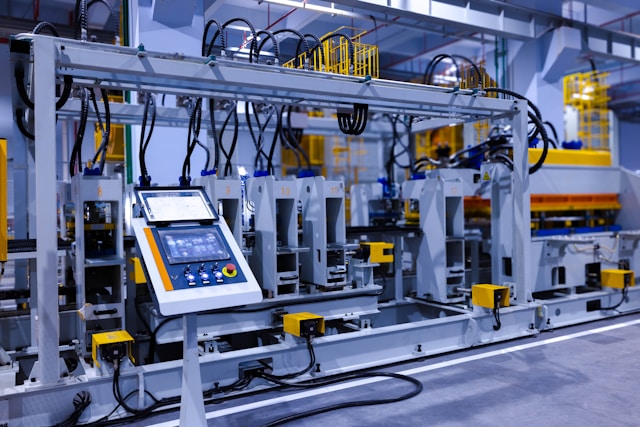OrigSmart


Industrial IoT vs SCADA
Which is the Future Technology for Industry?
 The continuous evolution of technology has opened new perspectives in industrial automation. SCADA systems have been one of the foundational pillars in recent decades, enabling efficient monitoring and control of industrial processes. However, the expansion of Industrial IoT (IIoT) has elevated data collection, processing and utilization to new levels. Understanding the differences, advantages and disadvantages between these two solutions is crucial for any company wanting to remain competitive through digitalization.
The continuous evolution of technology has opened new perspectives in industrial automation. SCADA systems have been one of the foundational pillars in recent decades, enabling efficient monitoring and control of industrial processes. However, the expansion of Industrial IoT (IIoT) has elevated data collection, processing and utilization to new levels. Understanding the differences, advantages and disadvantages between these two solutions is crucial for any company wanting to remain competitive through digitalization.
Fundamentals of SCADA Systems
SCADA (Supervisory Control and Data Acquisition) systems have long played a defining role in industrial automation. These systems primarily serve remote monitoring and control purposes. Typically, PLCs (programmable logic controllers) or RTUs (remote terminal units) connect to various sensors and equipment, transmitting data to a central control unit where an operator can monitor and direct processes.
Although SCADA is considered reliable, well-established technology, it has some key disadvantages. It mostly forms a closed system that's difficult to integrate with other digital devices, and its real-time data analysis capabilities are limited.
The Industrial IoT Approach
Industrial IoT transfers the IoT (Internet of Things) concept into industrial environments. Using IIoT, a much more flexible, scalable and data-driven infrastructure can be created by connecting smart sensors, edge devices and cloud-based solutions.
The advantages of IIoT include deeper data collection, predictive maintenance capabilities, real-time analytics and data-driven decision making. Information reaches not just central control but can be processed and analyzed at multiple levels across different platforms. This is particularly important in industries where fast response times and minimizing machine downtime are critical.
Key Differences Between the Two Systems
-
Data Management and Accessibility
While SCADA systems process data in a limited, mostly local manner, IIoT offers global-level access and real-time analysis. IIoT devices can continuously transmit data to the cloud where, supplemented with machine learning algorithms, predictive and prescriptive analytics can be performed.
-
Scalability and Integration
SCADA systems are typically difficult to expand. Integrating new equipment or production lines may require significant software and hardware development. In contrast, IIoT solutions are more flexible and can even connect to existing sensors, enabling more cost-effective and faster implementation.
-
Security
While SCADA systems are secure as they generally operate on closed networks, IIoT is more open and thus presents more potential attack surfaces. However, IIoT industry players are making serious efforts to develop cybersecurity solutions, and protocols now exist to minimize this risk.
-
Costs
Implementing and maintaining traditional SCADA systems can incur significant long-term costs, especially when expansion or upgrades are needed. IIoT solutions may be more expensive initially but pay off long-term through more efficient data management, less downtime and lower maintenance requirements.
When to Choose Which?
The answer primarily depends on the specific industry, company goals and existing infrastructure. In environments where stability and closed systems are paramount - such as critical infrastructure - SCADA may still be the most suitable choice. However, for dynamically developing industrial players open to digitalization, IIoT's offerings are becoming increasingly attractive.
Potential for IIoT and SCADA Coexistence
Choosing between the two technologies isn't necessarily required - a hybrid approach could be key to the future. Combining SCADA's reliability with IIoT's data processing capabilities can create an architecture that blends stability with innovation. Some companies are already developing systems that connect IIoT components to existing SCADA environments, thereby increasing system efficiency.
Summary: A New Era of Industrial Digitalization
The differences between Industrial IoT and SCADA systems manifest not just at the technological level but also reflect a shift in mindset. While SCADA is the stable pillar of the past, IIoT is the digital promise of the future. Rather than competing, the two approaches can complement each other and together form the foundations of a new era in industrial digitalization.
Zoltán Vashegyi
2025.04.05.